This is a continuation of a series of posts on the Nikon D850. You should be able to find all the posts about that camera in the Category List on the right sidebar, below the Articles widget. There’s a drop-down menu there that you can use to get to all the posts in this series; just look for “D850”. This is equally a post about the Sony a7RIII, and is also tagged as such.
In the previous post, I compared the focus errors of the autofocusing systems of the D850 and a7RIII in AF-S mode, with a 55 mm f/1.8 on the Sony and a 55 mm f/1.4 on the Nikon. The Sony showed less focus shift and less variability. Now I’m going to look at AF-C performance. As before, I’m using the finder-based PDAF on the D850 and the sensor-based hybrid PDAF/CDAF on the a7RIII. I used EFCS with the D850 and electronic shutter with the a7RIII. The Nikon has the compromise AF Adjust of +5; AF adjustment is not possible on the Sony. The Sony AF tracking is set to Standard, and the spot size to medium.
I’ve plotted the three Adobe RGB color channels. The graph presents displacement of the image projected on the sensor from the desired green-channel focal plane. Negative numbers indicate front-focusing. The image-plane shift is in micrometers (um). The blue focus locations are separated from the red and green ones because of the longitudinal chromatic aberration (LoCA) of the lens. The dots indicate the results for each of the ten exposures at each f-stop. I’ve made lines indicating the average (aka mean or mu) of the sample set bolder and added thin lines above and below the means that are one standard deviation (sigma) away from it.
The Nikon has about the same amount of focal plane variability in AF-C as it did in AF-S. The Sony has more variability than it did in AF-S, but there’s something odd. There is a lot of variability near wide open, then things tighten up between f/2.5 and /4.5, then loosen again after that. In fact, probably since the a7RIII is focusing stopped-down in AF-C mode, at f/8 it has substantially more variability than the D850. It’s looking like the a7RIII has several focusing strategies, and employs different ones at different f-stops.
When we looked in the previous post at the D850 using AF-S with a +5 AF Adjust, it front-focused at wide apertures. Now it’s back-focusing by about the same amount. I consider it fairly distressing that the right AF-Adjust value depends on the AF mode.
Now we’ll look at the circles of confusion (CoCs) implied by the amount of defocusing we see above:
There’s only a narrow band of f-stops where the a7RIII has lower variability, and it’s substatially worse near f/8, and presumably beyond.
Let’s see the Nikon with the right amount of AF Adjustment for wide open:
With the AF adjustment properly set, the Nikon green-channel CoCs are staying within about 6 pixel-spacings. The Sony’s are within 3 most of the time and don’t get much beyond 4 even if you look at the one-sigma errors.
All of the above plots are for the first shot in a sequence. Since the Sony has an electronic shutter that can be used while the camera is handheld, I thought it would be interesting to look at what happens if you make 15-shot bursts.
The errors are somewhat worse at narrow apertures.
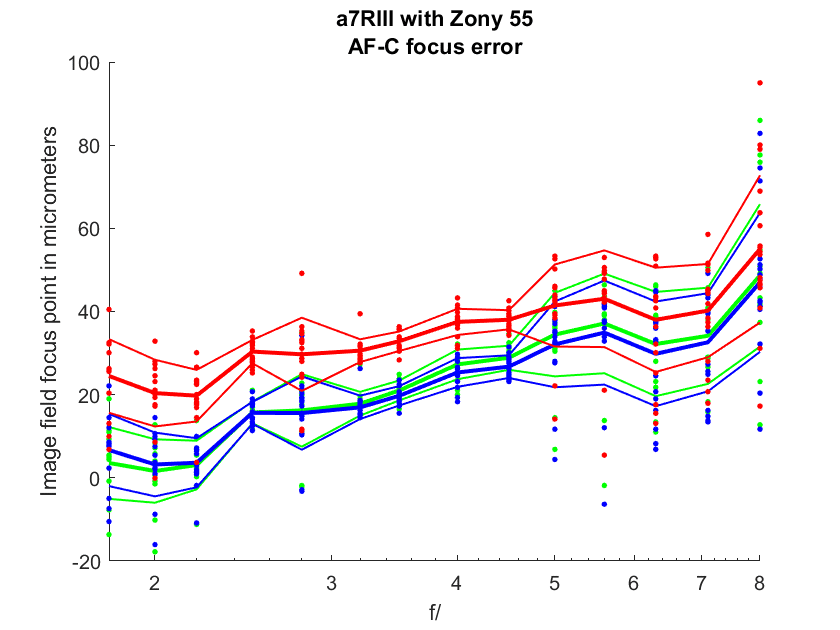
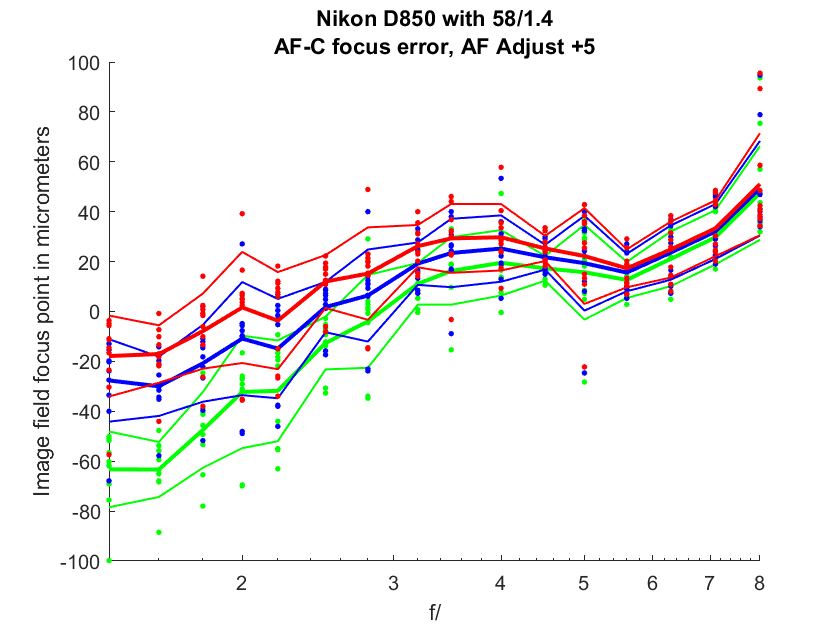
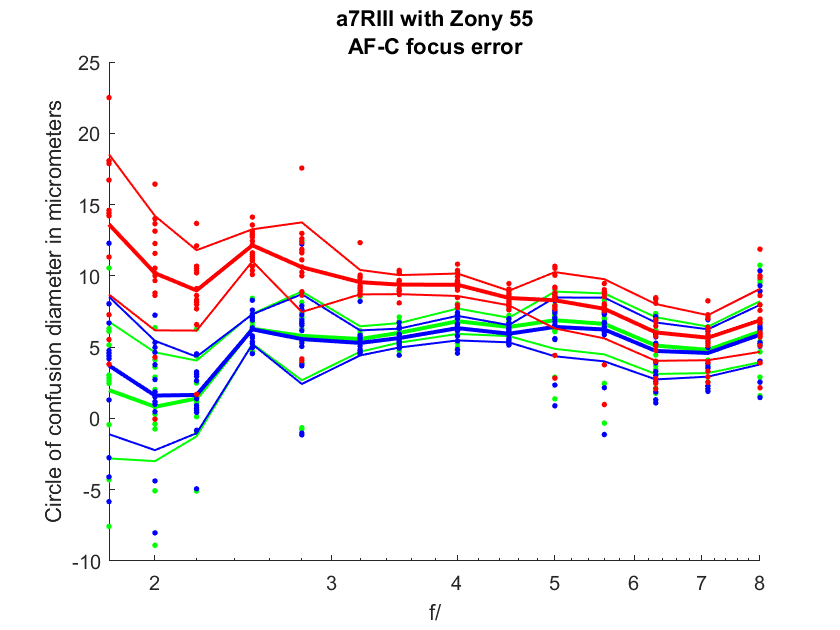
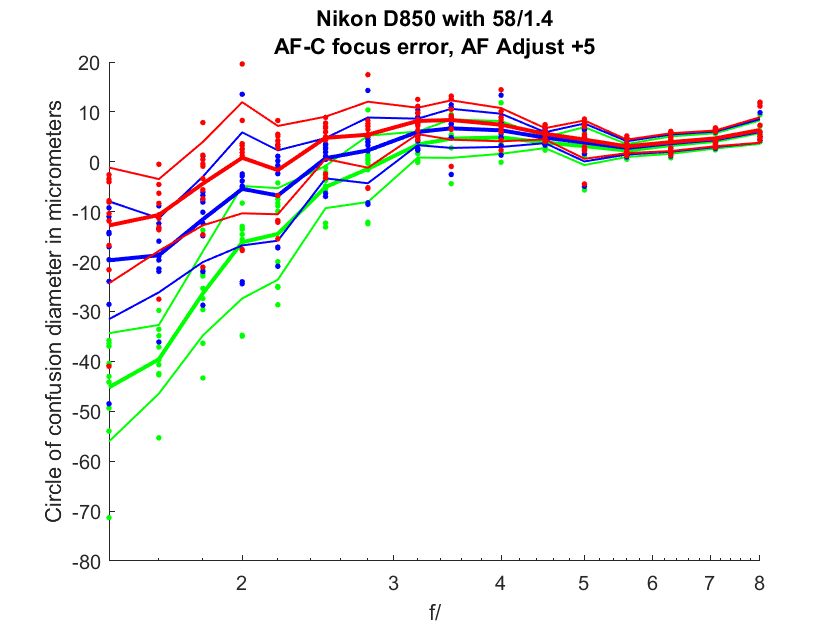
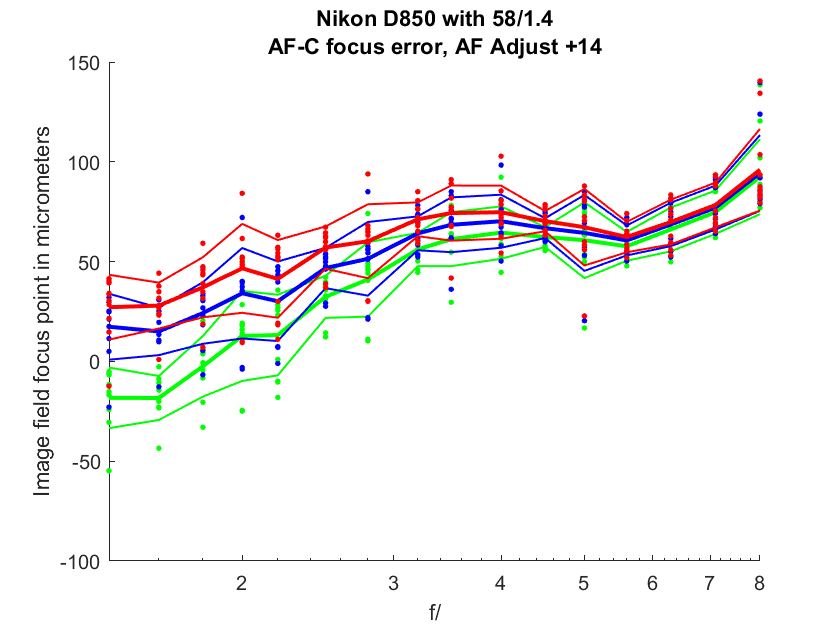
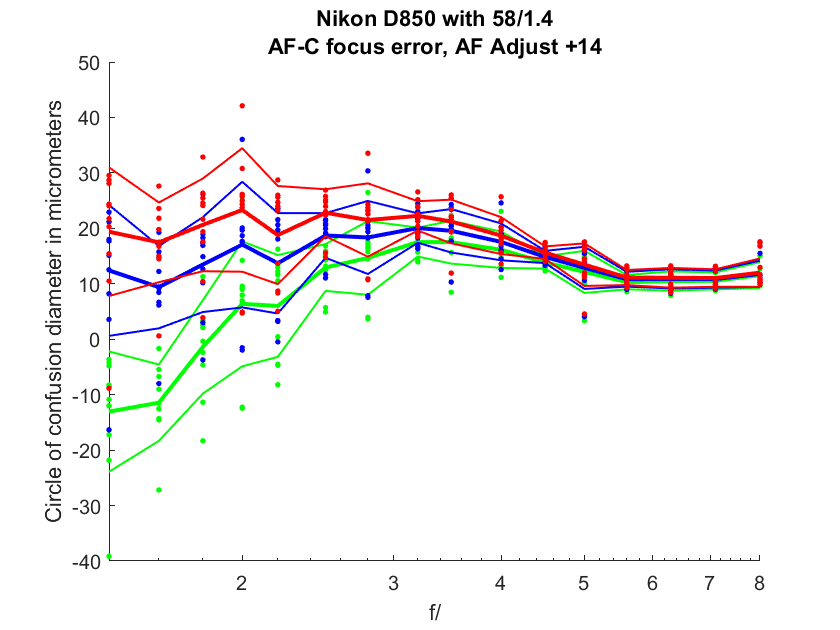
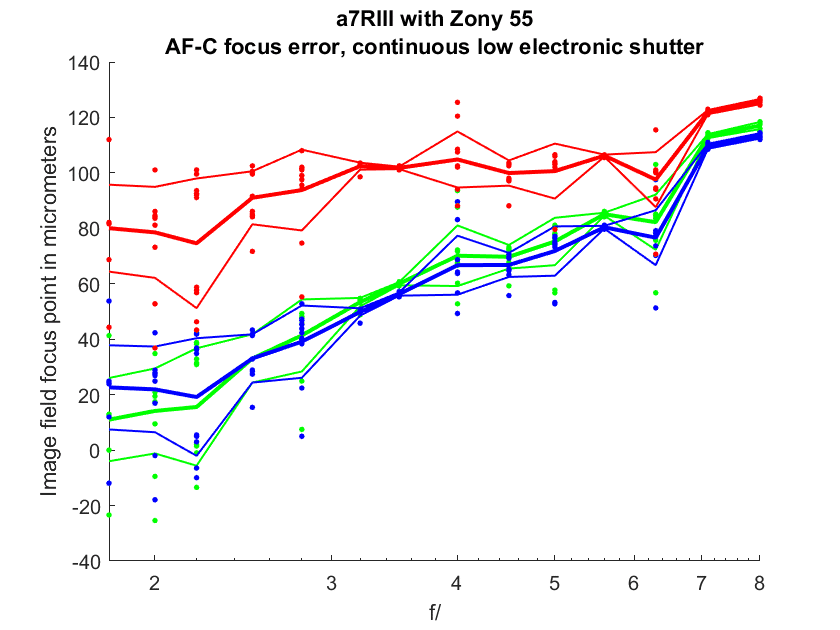
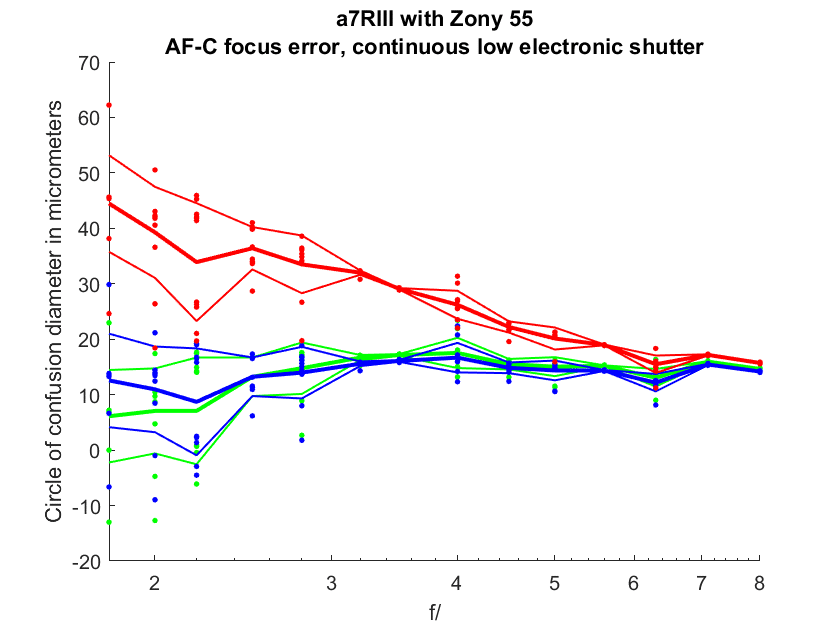
Leave a Reply